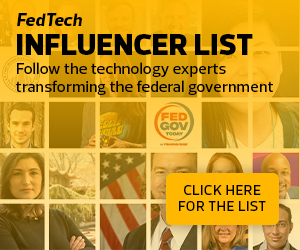Government Zero-Trust Journeys May Need Industry Guides
With the Sept. 30 deadline looming for civilian agencies to develop a zero-trust strategy, the topic is top of mind for federal and private sector IT experts. A recent report from Swimlane found that 67 percent of agencies were confident or very confident that they could meet the federal zero-trust requirements.
“However, there are still many who are early on in the process and will be looking to move quickly in the new year,” says Katy Mann, senior vice president of public sector for Okta.
Gerald Caron, CIO for the International Trade Administration, notes that federal agencies may need assistance to prepare for zero trust because no single solution works for every environment.
“I will point out the need for federal government and private industry to improve engagement on some of these key initiatives,” he says, adding that goes for other projects such as artificial intelligence and general IT modernization.
“Without the private industry partnerships, it will be tough going, as they are necessary to the success of such efforts,” Caron says. “There are so many great solutions and technologies that it is difficult to sift through all of them for any organization.”
The Department of Defense has three more years until its deadline and is “moving out aggressively on implementing zero trust,” says DOD Principal Deputy CIO Leslie Beavers. “But we can’t lose sight of the basic security blocking and tackling in the process.”
Modernization and zero trust go hand in hand, she says. “The federal government can’t be in the business of cobbling together solutions. We must prioritize integrated solutions and interoperability as we modernize our infrastructure.”
DIVE DEEPER: Third-party solutions help agencies seeking modernization guidance.
Improved Customer Experience with Online Federal Agencies
The White House’s Performance.gov website tracks the progress of agencies as they work to improve the customer experience. The General Services Administration, for example, introduced a streamlined version of USA.gov that allows visitors to find information and services more readily.
“The federal government made huge strides on customer experience projects in 2023,” says Jonathan Alboum, federal CTO for ServiceNow. “By focusing on life experiences that require touchpoints with public sector organizations, agencies are taking a human-centered approach to government service delivery.
“Each great experience that we can create is a small but important step toward rebuilding trust in government,” he adds.
Dave Wennergren, the CEO of the American Council for Technology-Industry Advisory Council says that he’s encouraged that the Office of Management and Budget has made customer experience a priority as it continues to implement the 21st Century IDEA, which requires agencies to, among other things, modernize websites and digitize services to improve customer experience.
“Making customers the priority is crucial for the government to deliver more effective mission outcomes,” he says. “Government still has far too many labor-intensive and paper-based processes that need to be reimagined to create more powerful user experiences, significantly improve processes and move to the digital world.”
READ MORE: Funding remains a hurdle for efficient digital government upgrades.
Data, Workforce Also Expected to Be Among 2024 Concerns
Other priorities that FedTech IT Influencers see for 2024 include:
Data: With all the talk about collecting, sharing and analyzing information across agencies, many still aren’t fully prepared for the actual work.
“The challenges of system interoperability, common data standards and data accessibility need a lot more attention,” says Garrett Berntsen, director of technology and national security for the National Security Council (speaking for himself and not the agency).
“IT systems that operate on common standards and that can safely and securely transmit data across agency architectures are going to be essential to agency modernization efforts.”
The DOD’s Beavers believes that agency decision-makers, while well informed about data and analytics, could use “a more robust understanding. Not everyone needs to be a data scientist, but I think everyone should be familiar with the basics.”
Cybersecurity in general: “The lack of a common cybersecurity baseline across the entire federal government makes responding to threats in real time in a unified manner a significant challenge,” says Steve Faehl, Microsoft’s federal security CTO. “Great progress is being made with efforts like zero trust, but we need to further accelerate outcomes.”
And as agencies continue to migrate services to the cloud, says Sarah Kaczmarek of the Government Accountability Organization’s Watchdog Report podcast, “this will require them to overcome cybersecurity and procurement challenges, among others, to fully realize the benefits of transitioning.”
Workforce issues: “Technically, it’s not an IT issue per se, but the workforce is top of mind for every federal IT leader I talk to,” says Francis Rose, host of the Fed Gov Today podcast: “Retirement eligibility, the difficult and tedious hiring process and frustrations with the state of agency tech all make it harder and harder for agencies to both hire and retain the staffs they need.”










